Exploring Traditional Jewelry in Islamic Culture

Exploring the world of traditional Islamic jewelry is like taking a journey through history, artistry, and spiritual symbolism. From the delicate jingles of anklets to the exquisite filigree of necklaces, each piece tells a story of ancient traditions, rich craftsmanship, and strong beliefs.
Traditional jewelry represents the distinct nuances of each location across the broad fabric of Islamic cultures. From Morocco's vivid enameled bracelets to India's delicate gold filigree, each piece has the fingerprint of local techniques, themes, and materials. In Turkey, the intricate "sedef" inlay of mother-of-pearl may captivate you, while Oman entices with its bold silver anklets embellished with intricate "mashab" patterns
Traditional Jewelry In Islamic Culture
The Islamic Empire's rich array of customs and cultures spurred the production of an incredible variety of jewelry.
Some works are made using conventional techniques and materials, such as bronze, silver, and semi-precious stones, while others are created using precious metals and jewels, as well as the most complex tools and techniques available at the time.
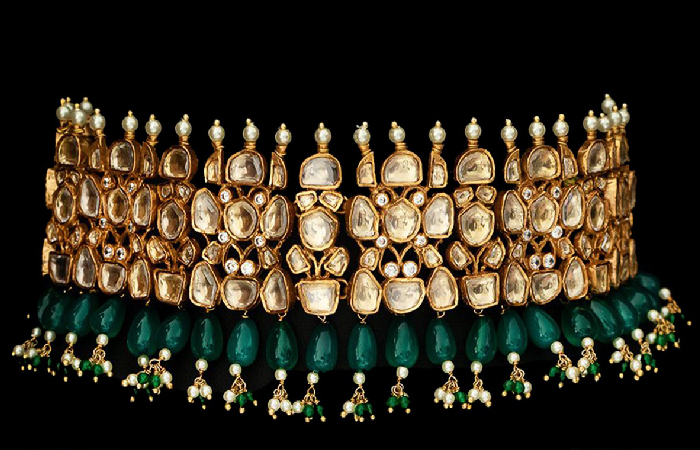
Overview Of The Importance Of Jewelry In Islamic Culture
Jewelry was created and worn by both men and women in the Islamic world. The most valuable materials, like gold and silver, have been used in making traditional islamic jewelery, and the most expensive and sought-after gemstones have frequently been added to jewels to make them more colorful and, above all, luxurious.
-
Islamic jewelry was mostly made of gold and silver, which were almost entirely sold from Nubia (modern-day Sudan) to the rest of the Islamic world, according to the eminent historian Ibn Khaldun in his Muqaddima (Prolegomena).
-
Arab scientists have studied gemology and mineralogy extensively, not only broadening knowledge of gemstone and mineral qualities, but also improving mining ways to obtain them.
-
Agates and carnelians were frequently used as seal stones in the Islamic world. They had the inherent power to ward against evil, bad luck, and disease, and according to history, the Prophet Muhammad wore a silver ring with a carnelian. Turquoise would keep the owner from falling into poverty.
-
Rubies were thought to be the most expensive of all stones and were associated with the Adam myth. Emeralds were highly prized because the shades of green seen in these gemstones were thought to represent Islam, as green was the Prophet Muhammad's favorite color.
-
Pearls and corals were also used to adorn jewelry, and there is evidence that the pearl trade began around 8000 years ago.
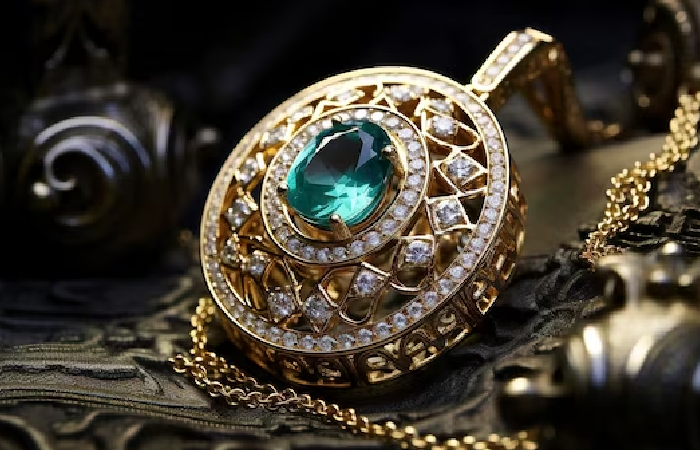
Jewelry is mentioned in the Quran in sections emphasizing moderation and beauty. It encourages decoration during prayer and other occasions.
The Prophet Muhammad (PBUH) advocated for the judicious use of jewelry for attractiveness and cultural expression, wearing his signet ring as an example.
- Pearls and silver are two gemstones and commodities that are connected with purity and justice.
- Amulets and talismans with jewelry elements are said to protect against evil and provide blessings.
- Religious inscriptions or symbols appear on several jewelry pieces, providing as ongoing reminders of faith and dedication.
Significance Of Halal Compliance In Jewelry Making And Purchasing
Halal compliance in jewelry making and purchasing is more than just a formality; it's a conscious decision to align your adornment with your Islamic values and principles.
By prioritizing ethical sourcing, permissible materials, and responsible production, you can contribute to a more mindful and responsible jewelry industry, ensuring your jewelry reflects not just beauty but also ethical and spiritual considerations.
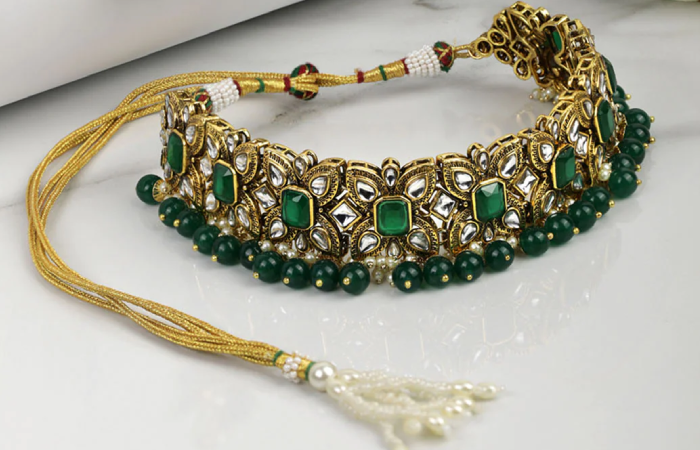
-
Ethical Materials procurement: Halal jewelry promotes ethical material procurement, assuring fair wages and working conditions for miners, gemstone cutters, and craftspeople involved in the jewelry-making process. This reduces the possibility of exploitation or human rights breaches.
-
Production Process: Halal compliance extends to the jewelry manufacturing process as well. This includes not using alcohol or pork-derived chemicals in polishes or adhesives to keep the jewelry pure and permissible for Muslims.
Exploring Traditional Indian Jewelry
Jewelry in Indian culture has a rich and vivid past that is entwined with its social, religious, and cultural tapestry. Its value goes beyond mere ornamentation, holding stories of heritage, strength, and spiritual beliefs. Let's take a look back at its history:
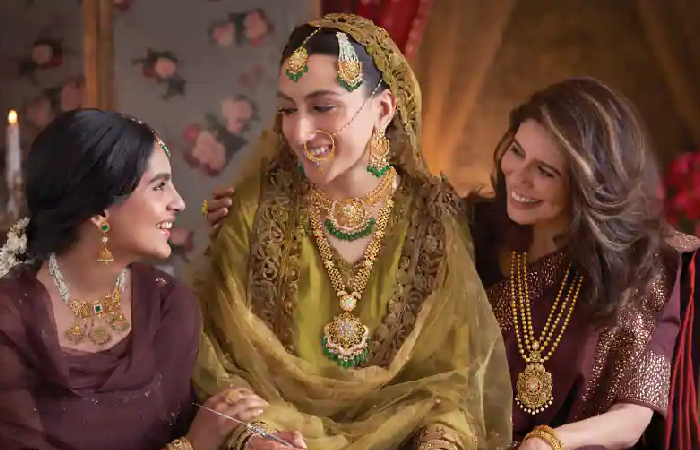
Historical Significance Of Jewelry In Indian Culture
Traditional Indian Jewelry has history that dates back to time immemorial. Beaded Indian jewelry has been traced back to 1500 BC. This was during the time of The Indus Valley Civilization. Later, the Indus Valley region realized that metals may be utilized to manufacture jewelry.
-
India had an abundant supply of precious metals and jewels. It prospered them as a result of export and exchange with other countries.
-
The Mughals ruled over India during the 16th century. They brought their knowledge and the technique of jewelry creation to the flourishing artistic Indians.
-
The Mughals are said to have introduced the Jadau technique to India, but Rajasthani and Gujarati artisans improved it and added their own particular touches to make it their own.
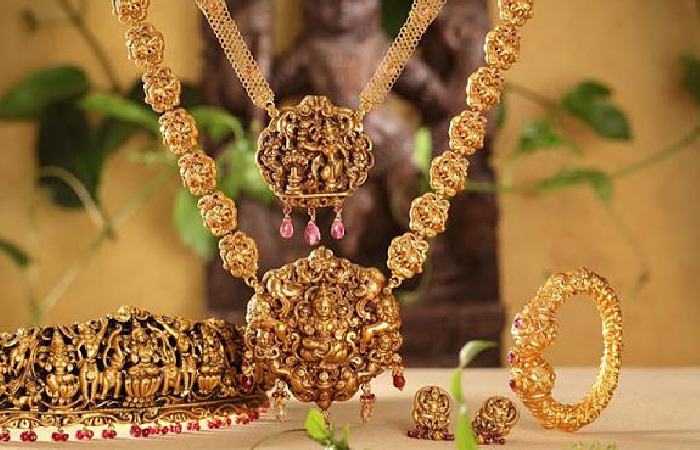
-
A jadau is created by beating or heating pure gold until it becomes pliable, creating a frame and theme, filling the hollow frame with lac, and inserting costly stones where necessary.
-
After the stones are placed, the jeweller begins the meenakari process by painstakingly applying one color at a time to the piece using just heated gold and no other adhesive. This time-consuming procedure results in a stunning piece of jewelry fit for kings.
-
It's worth noting that when European influences spread over India, jewelry design began to evolve in style. Famous jewelers including Cartier, Van Cleef & Arpels, Mellerio, and Chaumet Jewels began designing items for Indian Kings and Queens in the nineteenth and twentieth centuries.
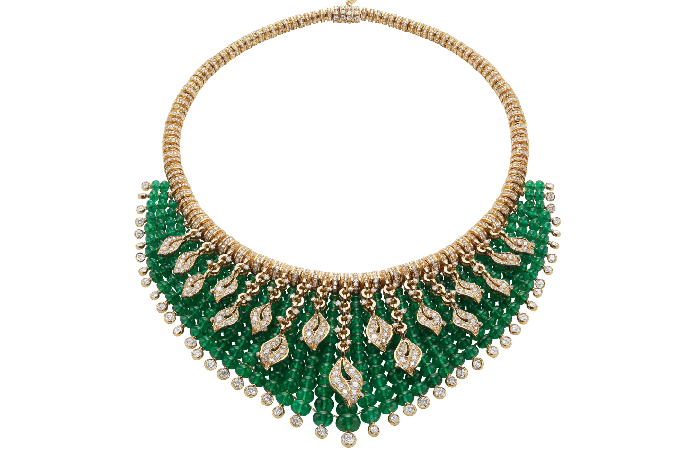
- Cartier used South Indian flower patterns into their designs, resulting in an exact copy of styles influenced by our ancient jewelry.
Traditional jewelry accentuates the radiance of every Indian Woman from head to toe.
Designs Unique To Indian Jewelry
Each Indian region evolved its own jewelry styles, with distinct motifs, materials, and techniques. Each piece expressed local culture and heritage, from the delicate gold filigree of South India to the massive silver decorations of Rajasthan.
Jewelry is worn extensively in rituals and ceremonies. Brides wore intricate mangalsutras and payals, while everyone wore gold nose rings and anklets to fend off evil spirits on auspicious occasions.
- Temple Jewelry
Temple jewelry includes adornments with motifs of Gods, Goddesses, flowers, and birds. The name comes from the way the jewelry is worn. It was worn by the Gods and Goddesses. The royal families created some jewelry for themselves.
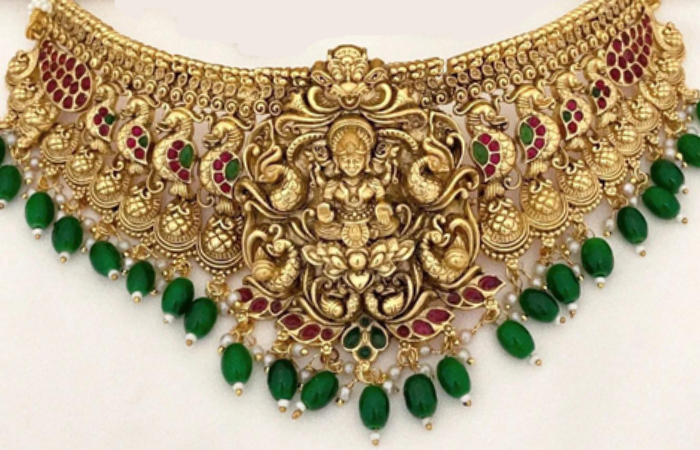
With time, the art transcended all barriers and was widely practiced by the common people. Even today, auspicious and holy jewelry is an important part of the jewelry given to a South Indian bride on her wedding day as God's blessing.
- Veni And Maangtika
A Veni is a jeweled braid that is worn when your hair is plaited. Veni pins, which were traditionally worn on special occasions, are now accessible and can even be used as a hair clip.
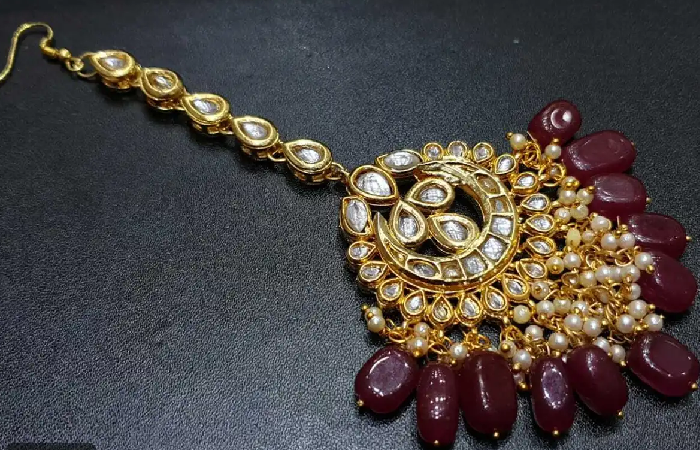
A Paasa and a Maangtika are sister pieces of jewelry, with the paasa worn on one side of the head and the maangtika worn in the central division of the hair.
- Kashmir's Delicate Touch
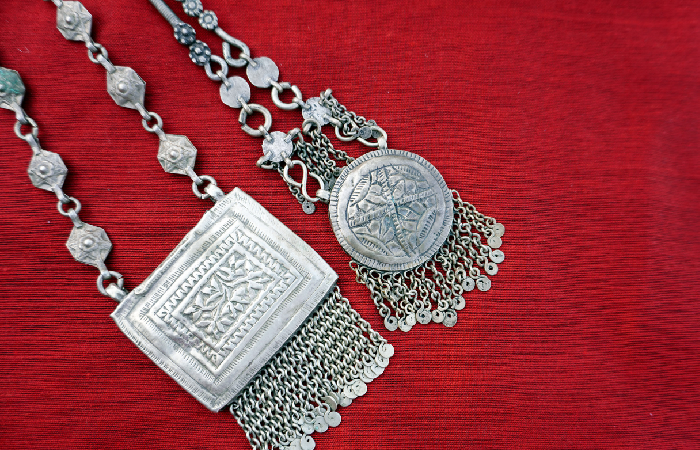
Nestled in the serene valleys, craftsmen meticulously hand-carve intricate filigree designs on silver jewelry.
- Rajasthan's Regal Elegance
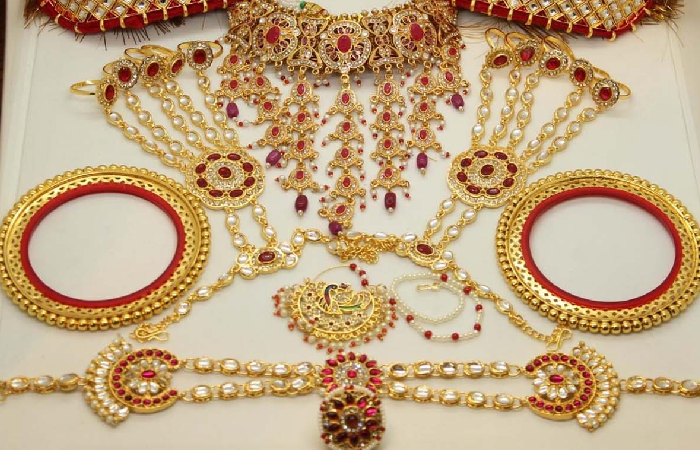
In the Thar Desert, Meenakshi Devi employs generations-old Kundan work, meticulously setting semi-precious stones on gold.
- Kerala's Coastal Charm
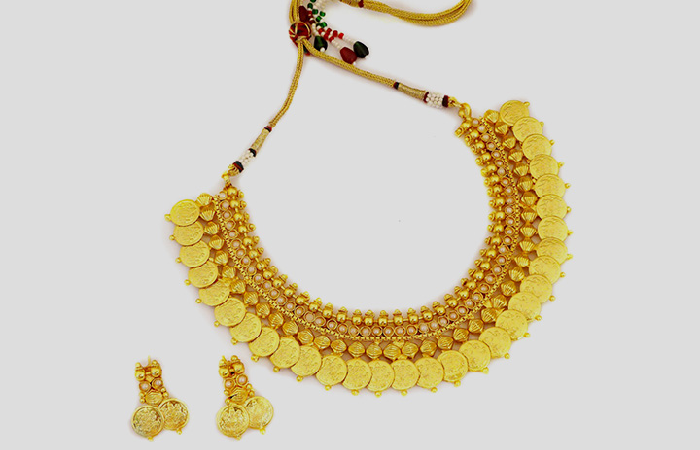
On the lush Malabar coast, artisans blend modern design sensibilities with traditional craftsmanship, creating contemporary gold and pearl jewelry pieces.
Indian jewelry tells a compelling story that weave history, religion, and artistry together. Its historical value stems from its ability to express stories of societal history, spiritual beliefs, and the enduring appreciation for fine craftsmanship that has inspired and adorned generations.
Care For Halal-Compliant Indian Jewelry
-
Assuring fair salaries and acceptable working conditions for miners, gem cutters, and other craftspeople.
-
Diamonds or gemstones must be acquired conflict-free i.e. to make sure they are not related to violence or human rights violations.
-
Gold, silver, and ethically produced gemstones, should be acquired by Islamic rules.
-
Maintain product purity by avoiding the use of alcohol or pork-derived substances in polishes or adhesives.
The Importance of Choice:
Halal-compliant Indian jewelry offers a distinct and significant perspective for conscious shoppers seeking beauty with ethical principles.
The Elegance of Traditional Pakistani Jewelry
Jewelry from Pakistan has a rich history, superb craftsmanship, and lively cultural expression. It's more than simply adornment. It tells the story of a diverse land's heritage, culture, and unshakable character.
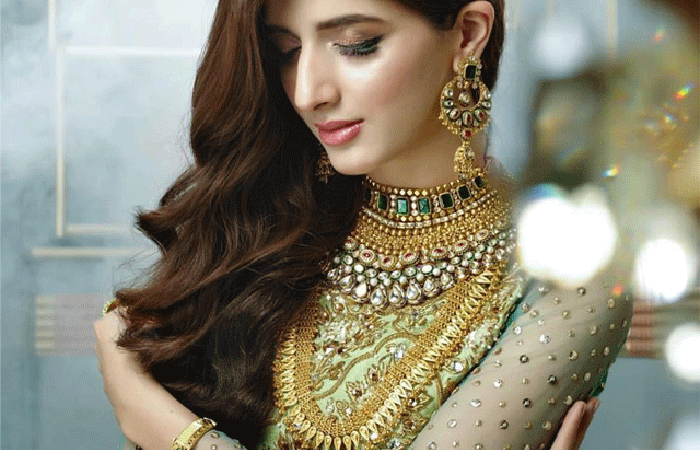
Popular Types of Pakistani jewelry
Pakistani jewelry is divided into two categories namely Traditional and Modern.
-
Traditional Pakistani Jewelry: Delicate patterns made with pearls and semi-precious stones are prominent features of this jewelry. It reflects Pakistan's rich cultural heritage
-
Modern Pakistani jewelry, is inspired by current fashion trends and is often made with lightweight materials. These include brass, copper, and alloy. It is distinguished by its simplicity and elegance. It frequently incorporates colorful beads and diamonds.
While traditional Pakistani jewelry may be connected with the past, modern designers are giving these historical traditions new life. This is accomplished by producing unique designs that reflect global trends while keeping cultural significance. This fusion of the past and the present has produced in a distinct and lively jewelry culture in Pakistan.
Prominent Pakistani Jewelry Designs are Listed Below:
1. Kundan jewelry: Kundan Jewelry is made from uncut diamonds or polki. These are placed in gold foil, and are surrounded by multicolored glass stones.
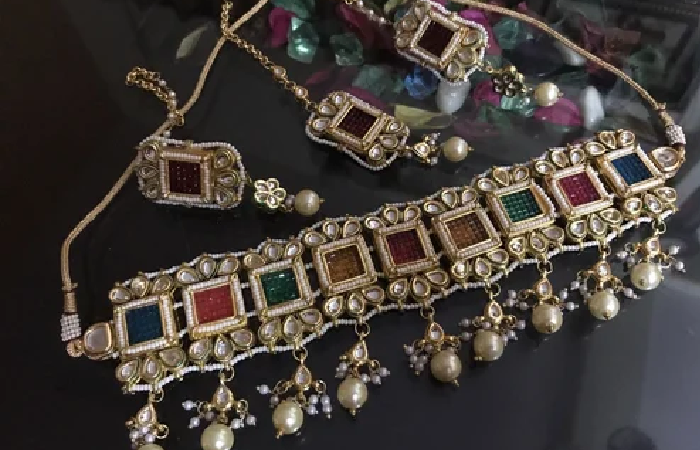
Well-known for its stunning designs. It is worn by brides on their wedding day.
2. Jhumka Earrings: These traditional earrings are made in the shape of a bell.
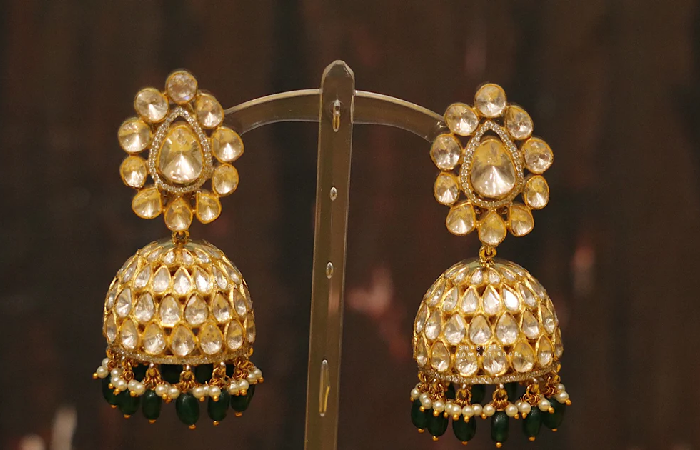
Often made with gold and studded with pearls and semi-precious stones. Frequently worn on important occasions or by brides.
3. Matha Patti: This is a traditional bridal headpiece worn by Pakistani women.
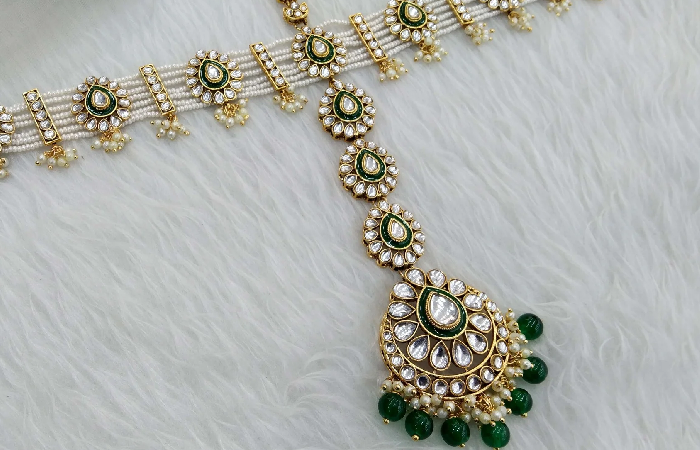
It is a symbol of elegance and beauty. Made of gold and embellished with semi-precious stones and pearls.
4. Polki Jewelry: Polki jewelry is created with uncut diamonds set in gold or silver. It is highly sought after because of its vintage appearance.
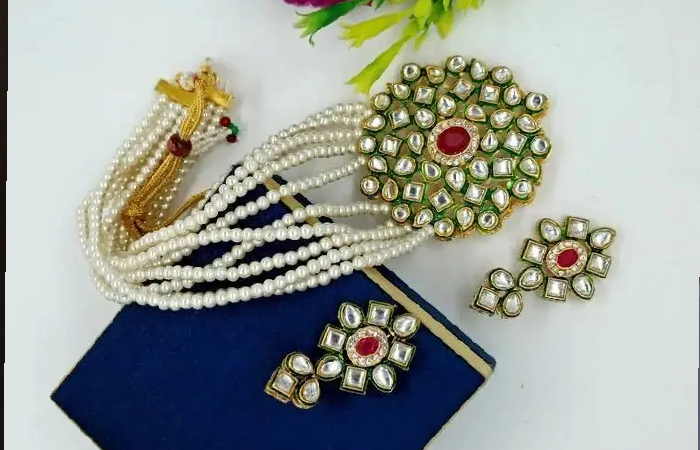
Typically worn during formal occasions. Its timeless charisma and conventional design make it a popular choice for brides and other women.
Pakistani jewelry is notable for its delicate patterns and fine craftsmanship. It makes use of high-quality materials. There is a particular design to fit your taste and occasion, whether you desire something delicate or dramatic and eye-catching.
The Cultural And Religious Influences on Pakistani Jewelry Design
Pakistani jewelry has changed over time and is influenced by numerous cultures. Mughal, Persian, and British are among them. The Mughal era had a significant impact on Pakistani jewelry. Many modern Pakistani traditional jewelry styles and themes are influenced by them.
Religious Influence
Intricate geometric shapes and calligraphic motifs decorate pendants, bangles, and headpieces are inspired by the beauty of Arabic writing and Islamic architecture. These themes represent trust, harmony, and heavenly blessing.
In Islamic culture, several jewels have unique connotations. Emeralds are connected with wealth and spiritual development, whilst sapphires are associated with knowledge and protection. Choosing jewelry made with these stones becomes a means of expressing and nurturing personal ideals.
While some Pakistani jewelry exudes dazzling opulence, Islamic modesty norms advocate a balance of beauty and moderation. Headscarves and armlets enhance elegance without disclosing or bringing unnecessary attention to the wearer.
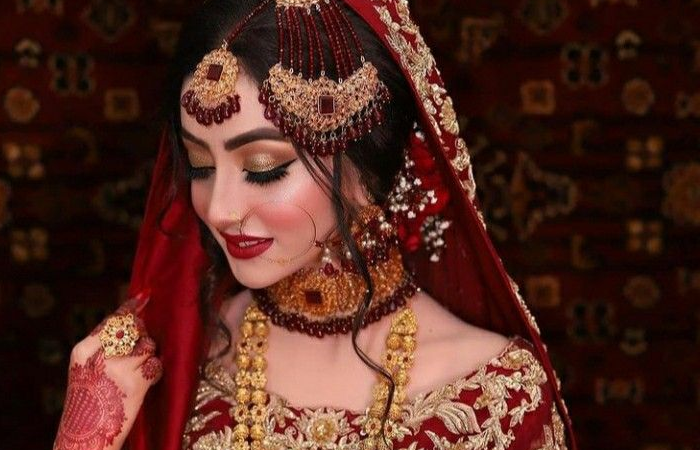
Cultural Influence
The Mughal Empire instilled techniques such as Kundan (gemstone setting) and Mina Kari (enamel painting) in Pakistani jewelry. These complex designs can still be found on necklaces, pendants, and earrings, whispering tales of a bygone era's grandeur.
Traces of Turkic and nomadic traditions can be seen in the use of silver jewelry, especially in Khyber Pakhtunkhwa. Bold, hefty necklaces and anklets demonstrate a penchant for striking pieces as well as a sense of tenacity.
Each region in Pakistan has its own jewelry style, from the delicate gold filigree of Sindh to the bright lacquerware of Balochistan. These variances represent the country's complex tapestry of landscapes, communities, and cultures.
Pakistani jewelry is more than simply ornamentation.It's a tribute to years of talent and workmanship. Exploring its story teaches you more about the region, its people, and the enduring force of human creation.
Traditional Turkish Jewelry: A Blend of East and West
Turkish jewelry has an enthralling history that is intimately entwined with the rise and fall of empires, cultural exchanges, and changing artistic tastes. Let us take a trip through time, experiencing the pivotal moments in the creation of this vivid art form.
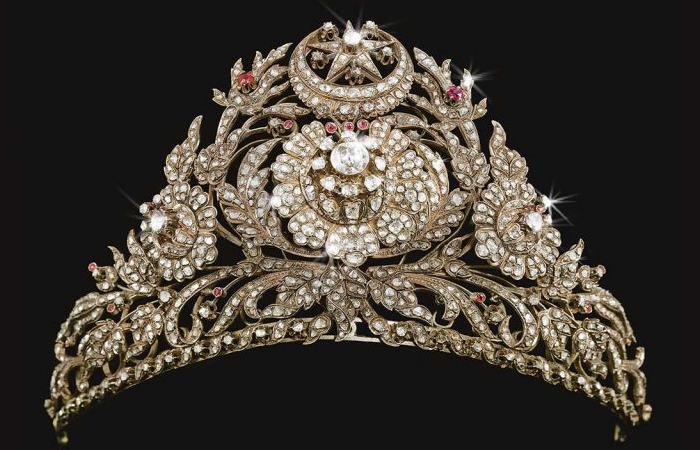
-
The Ottoman Empire heralded a golden age in Turkish jewelry, distinguished by extravagant use of gold, exquisite filigree and granulation methods, and an abundance of pearls and valuable stones.
-
The Ottoman Empire's strategic location encouraged cultural interchange, resulting in the adoption of European motifs and gemstones such as diamonds into Turkish jewelry design.
-
Different sections of the enormous empire evolved distinct styles. Edirne became known for its gold filigree, whilst Bursa specialized in enamel work, which added a bright splash of color to jewelry pieces.
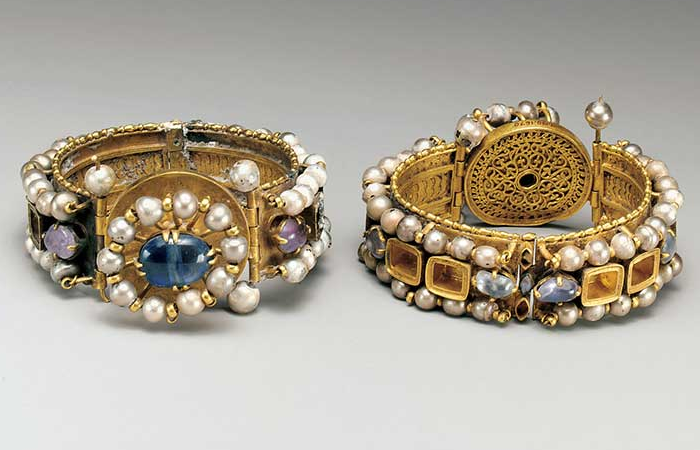
- Contact with neighboring empires such as Byzantium and the Seljuks provided elaborate metalworking techniques as well as a love of colorful gemstones such as emeralds and rubies.
Historical Overview Of Turkish Jewelry And Its Evolution
Jewelry is one of the things we have in common with our ancient forefathers. They aid in our understanding of social life of antiquity.
- The history of these accessory pieces, which are made of gold, silver, precious diamonds, or stones, is what makes them so expensive.
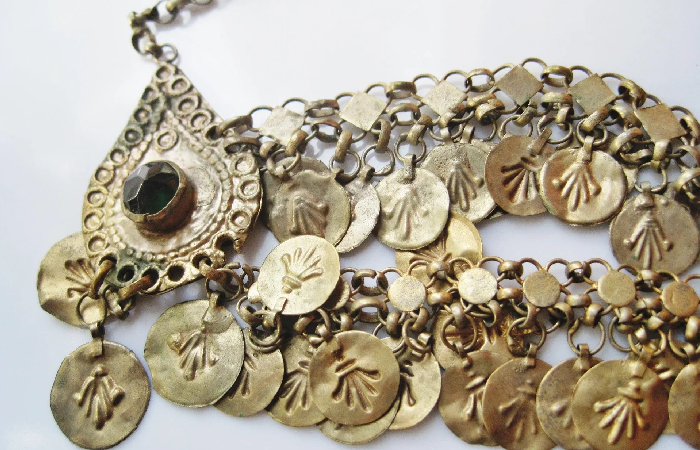
-
Jewelry culture dates back almost as far as human history and has developed over time.
-
Although the purpose, material, shape, and technique utilized in their manufacturing change with time, each jewelry piece provides us with extremely significant information about that culture's lifestyle.
-
The improvement in quality of life brought about by some innovations in the Bronze Age influenced jewelry culture, as it did everything else.
-
The discovery of bronze, an alloy of copper and tin, in particular, marked a significant advancement in jewelry creation. Parallel to this development, decorative stones and gold became more popular in jewelry.
-
Urartians are distinguished by their distinct jewelry styles and techniques. One of the most crucial aspects in this were their abilities and the presence of large mineral reserves in the areas where they settled. Aside from money, luck, and attracting admiration, jewelry was worn to indicate social rank.
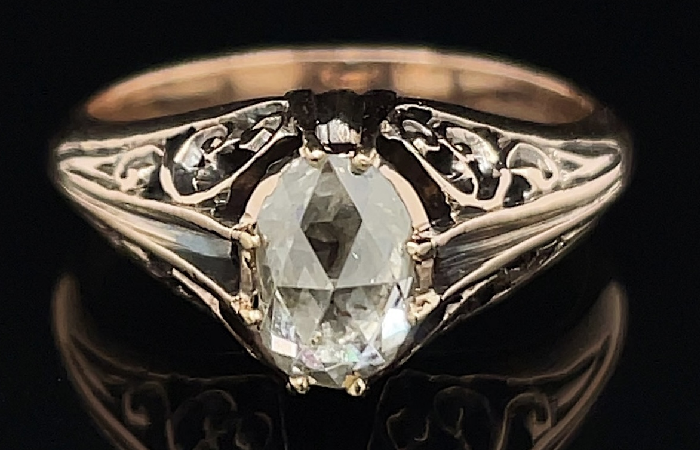
-
The Hittites, one of Anatolia's oldest civilizations, settled in places rich in raw materials, leaving us with a diverse range of jewelry types. Hair decorations, earrings, bracelets, necklaces, and rings are examples of this type of jewelry.
-
Numerous artifacts have been discovered from the Pontus culture. The Treasure of Amesos is perhaps the most intriguing and impressive of these works.
The Influence Of Islamic Art In Turkish Jewelry Designs
Traditional Islamic jewelry is a lovely and unique way to display one's beliefs, culture, and creativity. It holds a unique place in the hearts of Muslims worldwide. Spiritual beliefs and cultural heritage are associated with these designs.
Turkish jewelry has a rich and colorful history. It has been strongly influenced by Islamic creative inspirations. The designs and symbols of Turkish jewelry is heavily impacted by Islamic art. From exquisite filigree to gleaming jewels.
One of the most prominent Islamic art influences in Turkish jewelry is geometric designs.
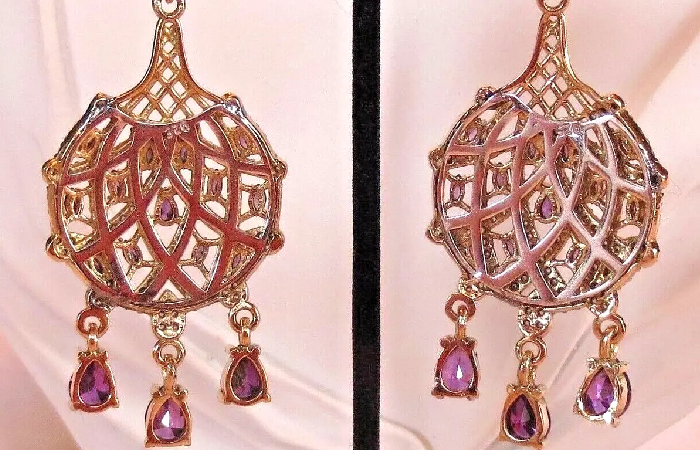
They embellish pendants, bracelets, and earrings with elaborate geometric shapes such as stars, octagons, and hexagons.
Islamic architecture and calligraphy has impacted these designs. Beyond fundamental aesthetics, these patterns typically imply harmony, oneness, and celestial perfection.
The art of Arabic calligraphy is showcased in Turkish jewelry. Quranic verses or invocations are tactfully etched on rings, amulets, and pendants.
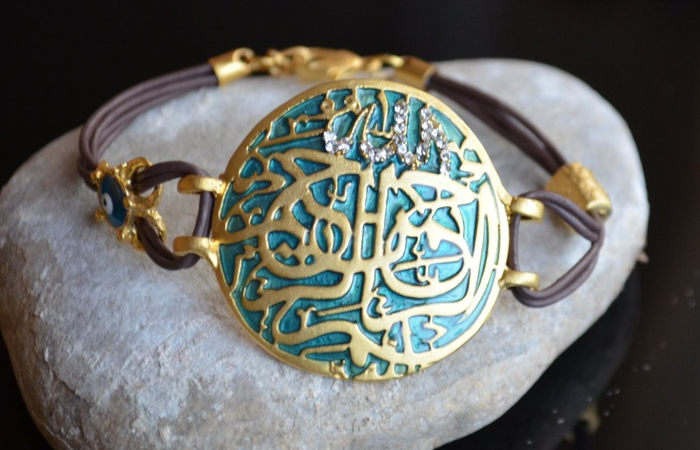
This gives the jewelry its spiritual importance as well as artistic beauty. These calligraphic drawings are useful personal talismans as well as regular reminders of faith.
Turkish jewelry is much more than just an adornment. Many of the pieces are profoundly symbolic and religious in nature. Amulets etched with Quranic texts are claimed to protect against evil.
The Unique Charm of Traditional Afghani Jewelry
Afghan jewelry is an important part of how Afghan women adorn their traditional clothing. The traditional garment (Gandi Afghani) will look barren and incomplete without the gorgeous heavy Afghan jewelry.
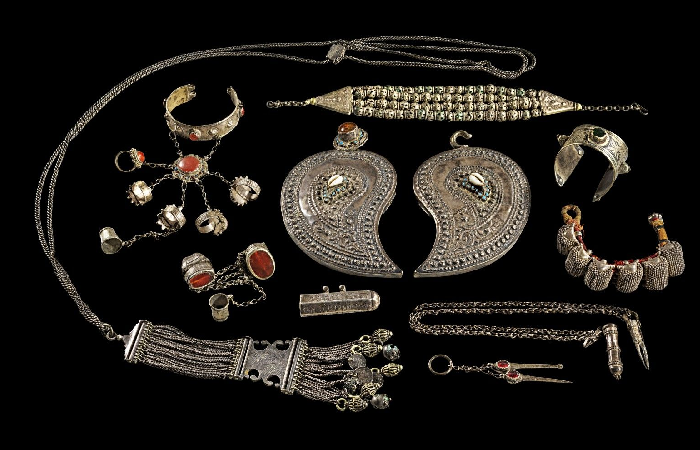
Afghan jewelry is renowned among Afghans not only for its beauty, but also for its fascinating history, which stretches back thousands of years and follows the ancient roads that intertwined across Afghanistan.
Understanding The Cultural Roots Of Afghani Jewelry
Afghanistan is a country of several nationalities and tribes, each having their own jewelry traditions.
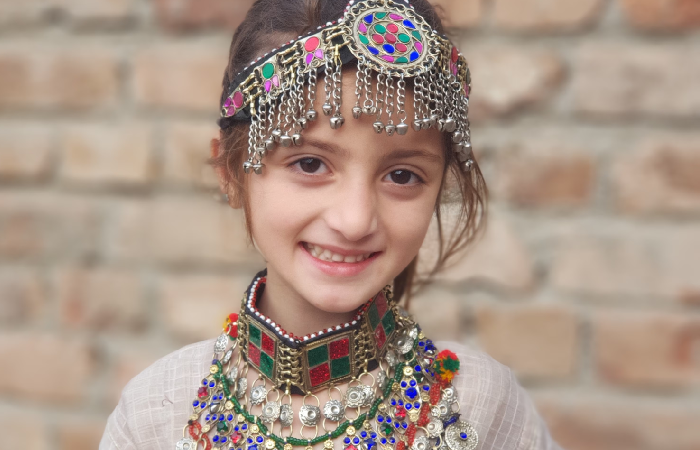
The Kuchis, who live a nomadic lifestyle, prefer elaborate silver necklaces with coins and bells, whereas Nuristanis prefer bright gold earrings and multicolored beads.
-
Each tribe, of the Kuchis and the Nuristanis, has its own style with symbolic connotations that represent social position, affiliation, and beliefs.
-
In Afghan culture, jewelry is more than just ornamentation. It frequently contains profound symbolic significance, indicating social position, tribal membership, and personal views.
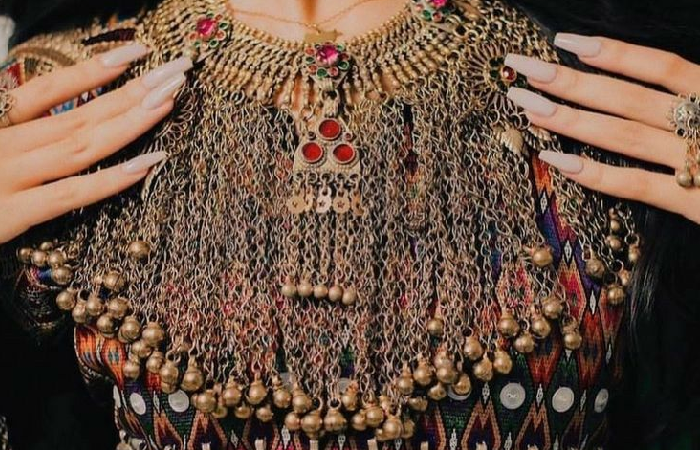
-
Contact with the Greek and Kushan empires resulted in the introduction of new techniques and motifs, such as the use of gold, jewels, and exquisite filigree work. These influences shaped the various styles that characterize Afghani jewelry today.
-
Gemstones, charms, and motifs have symbolic meanings, such as warding off evil, bringing luck, and commemorating life events.
Afghani Jewelry Techniques And Islamic Symbolism
Afghan Kuchi jewelry is defined by whether it is made of expensive materials, imported pieces, or made of beads. More expensive pieces of jewelry are typically made with precious and semiprecious stones set in metal and inlay settings by metal craftsmen working in public workshops.
The more valuable the jewelry, the more probable it is to have originated in the Afghan environment, with precious stones engraved in that would be found in mountainous or riverine places. These are typically worn on important occasions, whereas less expensive jewelry made from imported materials are worn on a daily basis.
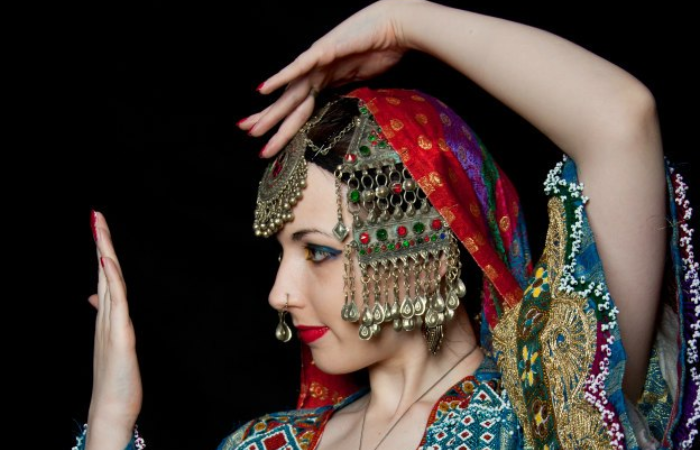
Delicate silver or gold threads are woven into elaborate patterns to create stunning necklaces, bracelets, and earrings. This technique, popular among Kochi nomads, necessitates remarkable skill and patience.
Tiny metal spheres are skillfully fused together to create texture and depth in pendants and amulets. This traditional technique, which Nuristani artisans have mastered, generates a sense of timeless elegance.
Turquoise, lapis lazuli, and emeralds are masterfully set in gold or silver, bringing splashes of color and symbolic importance.
Enamel in vibrant colors adorns jewelry, which generally depicts floral themes or geometric designs inspired by Islamic art. This Hazara-favored method provides a sense of whimsy and cultural individuality.
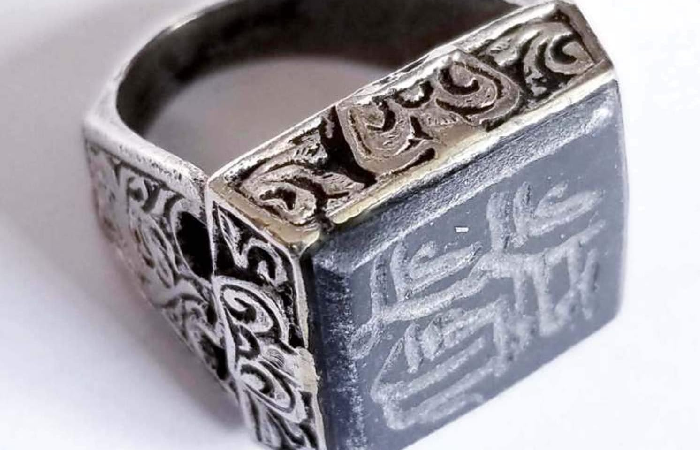
The usage of Arabic letters on pendants and amulets, as well as elaborate geometric patterns influenced by Islamic architecture, demonstrate the Islamic influence. These elements give the jewelry a sense of beauty and spiritual significance.
While certain Afghan jewelry styles are flamboyant and vibrant, Islamic modesty norms advocate a balance of beauty and restraint. Headpieces and anklets offer elegance without revealing too much, respecting Afghan women's cultural beliefs.
Halal Considerations In Afghani Jewelry Production
Despite not being expressly labeled as "Halal," Afghan jewelry creation frequently adheres to numerous Halal criteria due to cultural and religious influences.
Fair salaries, permissible materials, and impurity avoidance are all prevalent features. Individual judgment and respect for local sensibilities are essential while studying or acquiring Afghani jewelry.
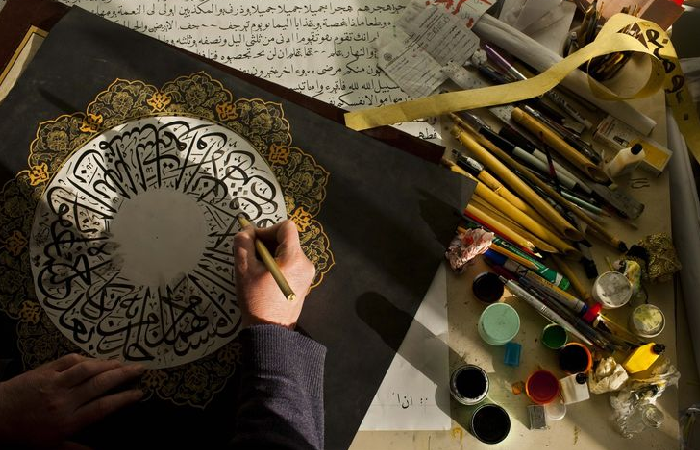
Buying Traditional Jewelry Online
Being proactive, aware, and prioritizing ethical standards are the keys to a good online purchasing experience for traditional jewelry.
https://www.zalesoutlet.com/
https://www.jamesallen.com/
https://www.georgjensen.com/
https://www.ross-simons.com/
https://www.jewellerystore.pk/
https://www.tesoro.pk/
https://nayabjewellery.com/
https://www.zehrai.com/
https://www.turkishjewellery.org/Gold-Jewellery
https://www.turkishjewellery.org/
https://www.boutiqueottoman.com/
https://baublelove.in/collections/afghan
https://zewarkhan.com/
https://www.afghanionline.com/
Look for merchants on Etsy who openly state their dedication to ethical sourcing, fair standards, and the use of approved materials such as gold, silver, and select gemstones. Examine their profiles and product descriptions thoroughly.
-
Nourish Market is a marketplace that promotes Muslim-owned businesses and creators. While not all jewelry is specifically labeled "Halal," many craftspeople use ethical and responsible manufacturing processes.
-
Milaap is an Indian platform that helps independent craftsmen and crafters. Jewelry producers from several regions of India, noted for their rich traditional styles and craftsmanship, can be found.
-
Souq Najjar is an online store specializes in traditional Egyptian jewelry, with many talented artisans selling handcrafted pieces.
-
Kaynak is a Turkish platform features jewelry from a variety of independent Turkish designers, with a focus on traditional patterns and techniques.
-
Carousell Malaysia is a platform where you can browse handmade jewelry offers from Malaysian artisans. Seek out sellers who emphasize cultural heritage and ethical sources.
Caring For Your Traditional Jewelry
Taking care of your traditional jewelry maintains its beauty and longevity, allowing you to treasure it for centuries to come. Here are some general guidelines. Adapting them to individual materials and procedures will extend the life of your items even further:
-
Silver tarnishes naturally over time. You can restore its luster using a silver polishing cloth. Avoid using strong chemical cleaners.
-
Gold is quite easy to maintain. To remove dirt and grime, use a soft brush and a mild soapy water solution.
-
Different gemstones demand different maintenance. Soft stones, such as pearls, must be handled with care, whilst tougher stones, such as rubies, can be cleaned with a mild soapy solution.
-
Scrubbing or using harsh chemicals on enameled jewelry might ruin the delicate finish.
Conclusion: Embracing Tradition and Faith
In conclusion, maintaining traditional jewelry in Islamic cultures is about more than just keeping beautiful artifacts. It is about sustaining a vibrant tapestry of cultural identity, artistic history, spiritual connection, economic empowerment, and global understanding.
By recognizing its significance and actively promoting its preservation, we assure that these priceless jewels will continue to gleam not only on adornments, but also in the hearts and thoughts of future generations.
Remember that cultural heritage is a shared responsibility, and everyone of us can help to preserve it via appreciation, education, and support for traditional crafts. Let us work together to ensure that the exquisite stories woven into these dazzling artifacts continue to resonate and inspire for years to come.
Appendix: Additional Resources and References
The International Gemological Institute (IGI): https://www.igi.org/
The Islamic Council for Food and Nutrition (ICFN): https://icna.org/
The World Jewellery Confederation (CIBJO): https://www.cibjo.org/
Books And Articles on Traditional Islamic Jewelry
https://www.iiad.edu.in/the-circle/history-of-indian-jewellery/
https://www.turkishjewellery.org/
https://www.boutiqueottoman.com/the-beauty-and-significance-of-islamic-jewelry/
https://www.nytimes.com/1983/05/29/arts/antiques-tracing-the-thread-of-islamic-jewelry.html
https://www.metmuseum.org/art/metpublications/Islamic_Jewelry_in_The_Metropolitan_Museum_of_Art
Online Forums And Communities For Enthusiasts Of Traditional Jewelry
https://niscka.com/collections/indian-traditional
https://www.kollamsupremeonline.com/79-traditional-jewellery/
https://www.diariesofnomad.com/categories/jewelry
https://www.amama.in/collections/traditional-jewelshttps://www.kernowcraft.com/blog/handmade-jewellery-business-tips/the-power-of-the-jewellery-making-community
https://www.malabargoldanddiamonds.com/
https://www.stacfinejewellery.com/
https://community.ebay.com/t5/Jewelry/bd-p/Jewelry
https://www.ganoksin.com/https://www.gemsociety.org/membership/
https://tyaani.com/




